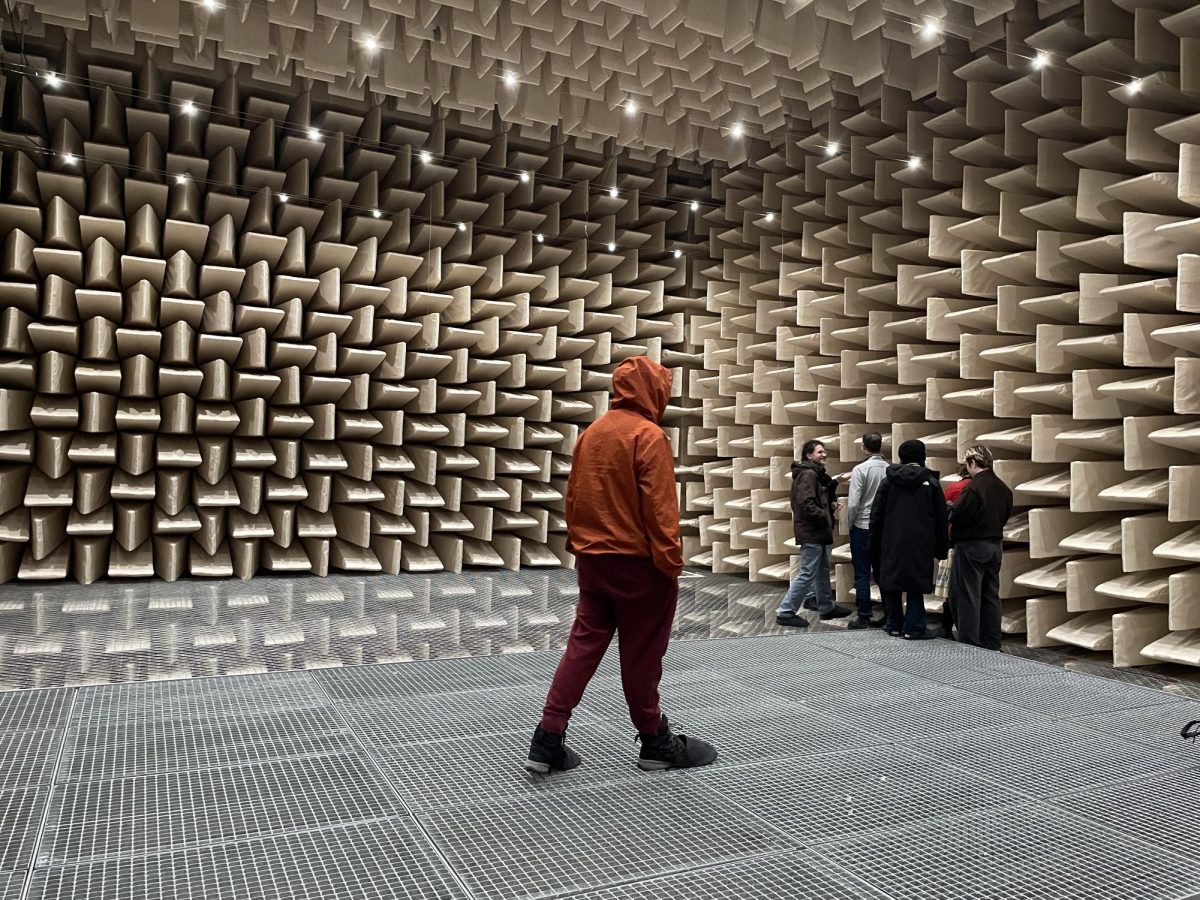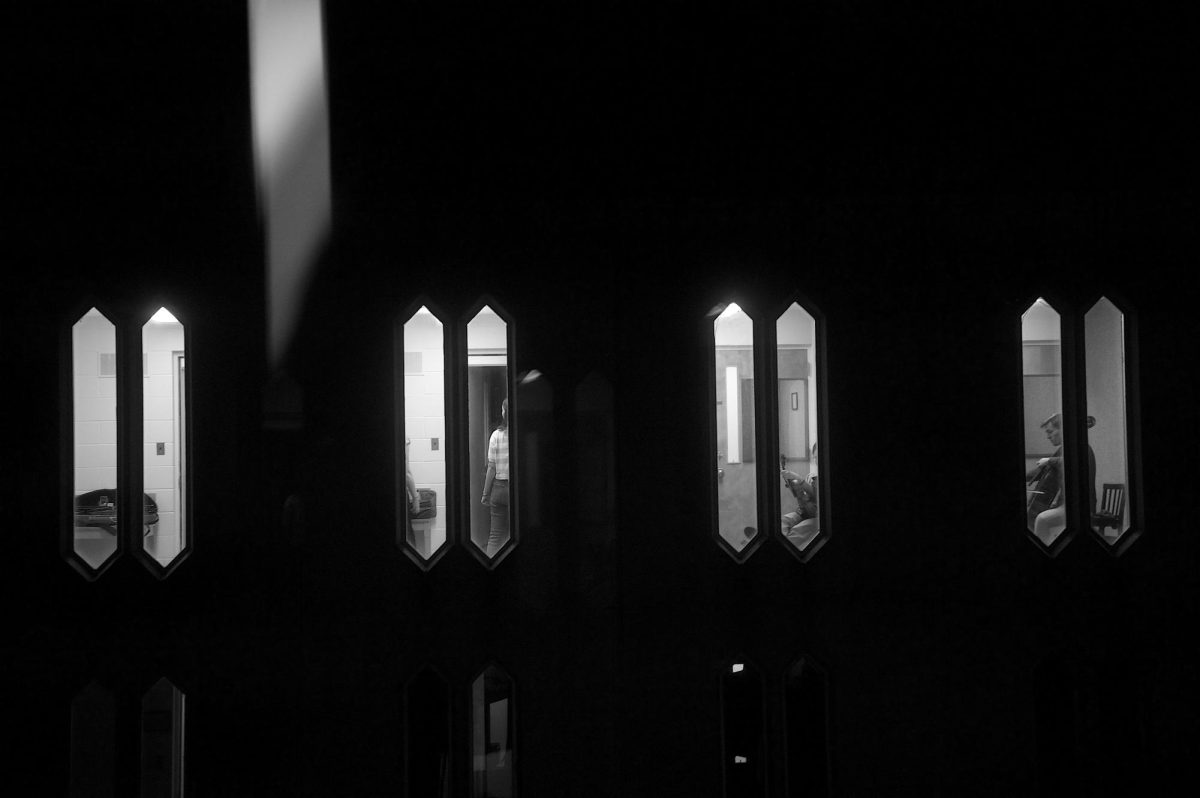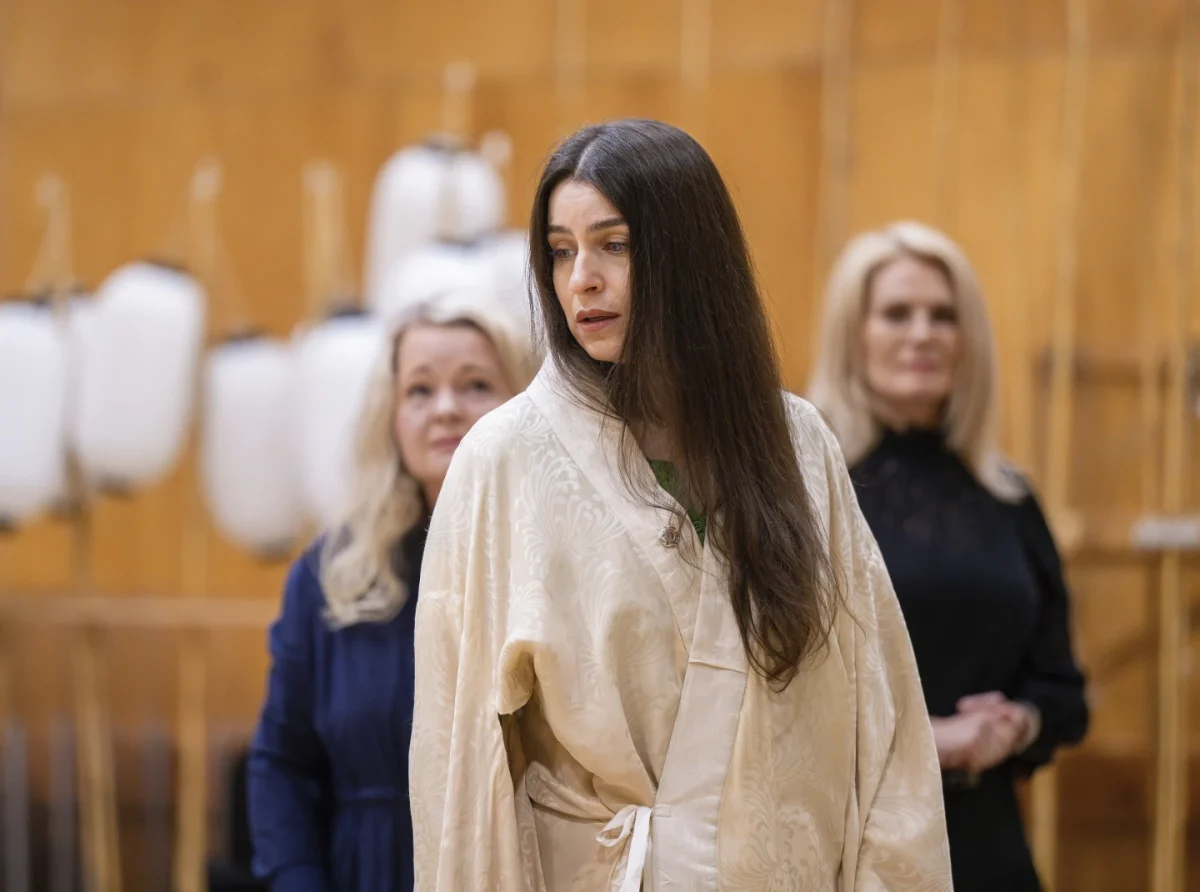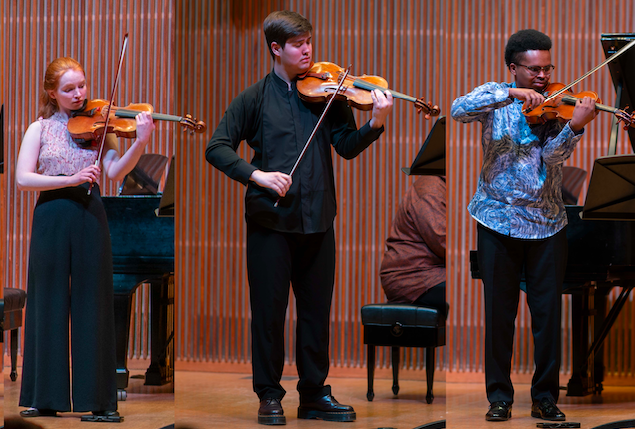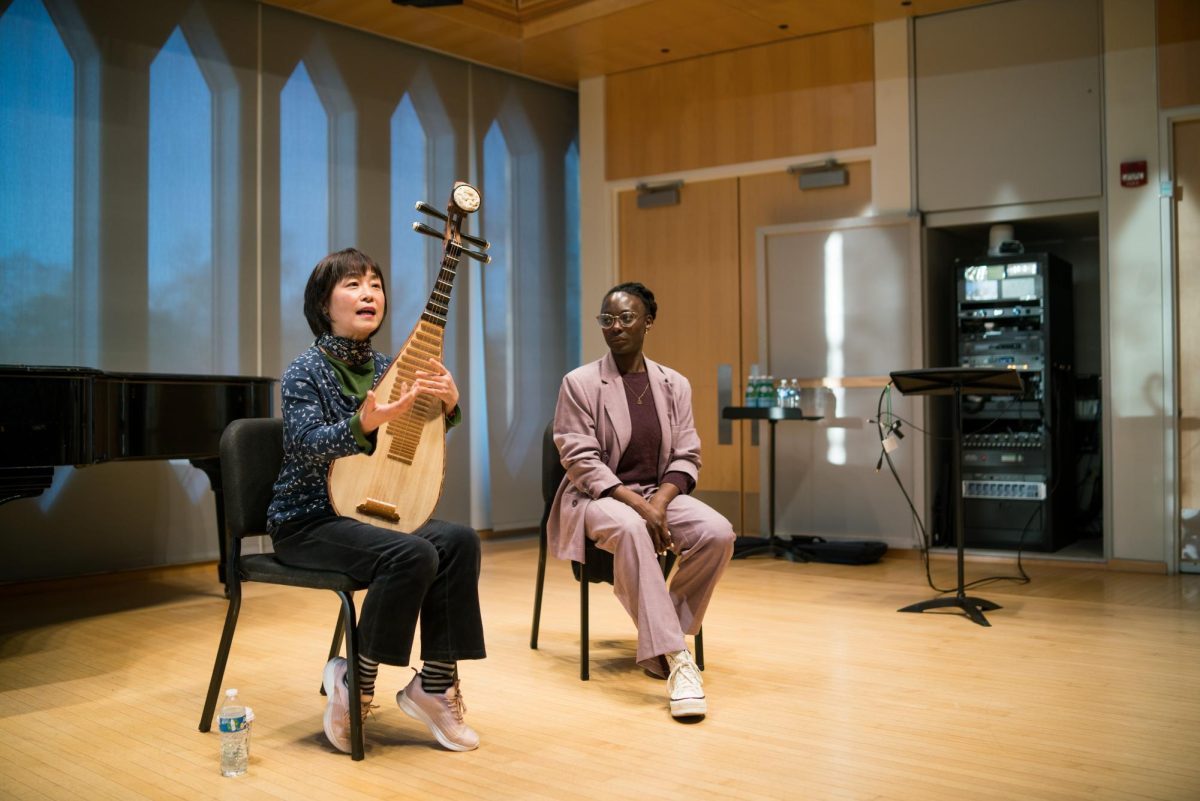This past January, a group of students under the TIMARA department flew to Berlin to explore electronic music at the Catalyst Institute for Creative Arts and Technology, housed in the famous Funkhaus Berlin. Participants attended workshops during the day and explored concerts and clubs in the city at night. TIMARA Department Chair and Professor of Computer Music and Digital Arts Tom Lopez, OC ’89, led the program alongside TIMARA alum Benjamin Bacon, OC ’11. Each student developed a project throughout their time in Berlin, and the trip culminated in a performance that showcased these creative endeavors. Blending newly learned skills with their personal process of making music, students in Berlin engaged in a cross-cultural investigation of sound.
A building complex in Berlin’s Treptow-Köpenick district, the Funkhaus was once the largest radio station in East Berlin. Built in 1951, the building previously included a supermarket, doctor’s office, and spa due to its nonstop hours of operation. The Funkhaus was abandoned after the fall of the Berlin Wall, but has since been rejuvenated. Now, the Funkhaus holds a legendary status among studios. With countless performance venues and recording studios designed to suit any acoustic specifications, performers, students, and artists all flock to this behemoth. Catalyst, the institute based at the Funkhaus, welcomed TIMARA students to sit in on classes and attend showcases.
Students were granted full access to state-of-the-art recording studios and speaker systems to prepare for their final concert. While they weren’t working on personal projects, they attended workshops on topics ranging from score notation to field recordings.
“It felt like more of an artist residency than a course,” double-degree third-year Hannah Stone said. “My personal favorite was actually with an Oberlin alum, Peter Blasser, [OC ’02]. He builds synths, and honestly synths are really cool, but I’m not that into circuit building. However, the connections he made when he talked about it were so unusual, it felt very special just to hear him talk about what he does.”
Double-degree second-year Fae Ordaz echoed Stone’s sentiments.
“He’s a really interesting character,” Ordaz said. “He basically just talked at us the whole time, but he’s very wise. He’s like a magician almost.”
This trip merged personal musical development with enjoyment as an audience member. The exposure to a wide range of music on this trip provided the students with insights into the elements they wished to emulate and those they hoped to avoid.
“We saw a ton of music,” Ordaz said. “Which was really awesome, but it also meant we saw a lot of good music and some really not-so-good music, which I think was really informative and helped me realize what I liked and what I didn’t.”
Stone’s experience was similar. “It was really validating of things that are happening in Oberlin,” Stone said. “Some stuff I wasn’t that into and was like, ‘Cool, I like what we’re doing here.’ But I also heard a lot that was really inspiring.”
Although he had previously visited the city on multiple occasions, double-degree fourth-year Orson Abram struggled to balance exploring Berlin with composing. “I found it particularly challenging because it’s just such a big place,” Abram said. “There’s so much going on, and I’m someone who always likes to try and do everything.”
This is not easy to accomplish in Berlin, a mecca for electronic music. This dedication to experimental dance music can be credited to Germany’s authoritarian history. After the fall of the Berlin Wall, the once illegal raves took over abandoned infrastructure. A tide of human connection flooded the city, symbolized by techno parties that promoted freedom and hedonism. The skeletons of Soviet-era industrial buildings now host remedial debauchery. On both sides of the wall there was a strict curfew. Now the clubs never close.
Ultimately, everyone on this trip found inspiration within the vibrant and restless city of Berlin. Without noticing, the sounds and techniques of the Berlin music scene entered Abram’s psyche.
“This might sound weird on a recollection, but I don’t think I thought I would be so inspired by the city, like in such a quick simultaneous way, and subconscious[ly] as well,” Abram said. “Everyone had their own way of being influenced by the city.”


